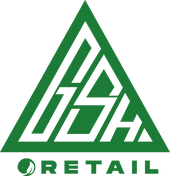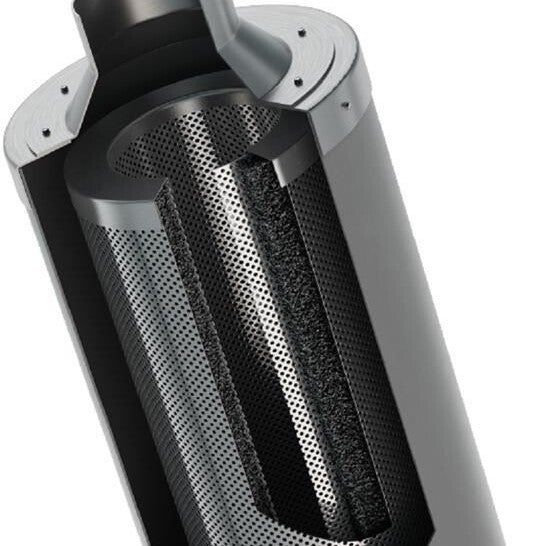The Power of Inline Carbon Filters in Hydroponics: Save Space and Adapt to Seasonal Changes
Hydroponic gardening offers numerous advantages, but maximizing your grow space and maintaining optimal environmental conditions can still be a challenge—especially in small, indoor setups. While much of the focus tends to go toward elements like lighting, nutrients, and humidity control, one tool that can truly elevate your system is the inline carbon filter.
Inline carbon filters do more than just control odors; they offer practical benefits like conserving vertical space and adapting ventilation strategies to suit seasonal temperature fluctuations. Here’s how an inline carbon filter can improve your hydroponic system while boosting efficiency and plant health.
What Is an Inline Carbon Filter?
An inline carbon filter is a compact filtration device integrated directly into your ventilation ducting. It uses activated carbon to absorb and neutralize odors, airborne chemicals, and pollutants in the air. This makes it especially useful in hydroponic grow rooms where odor control is crucial, but also for ensuring clean, healthy air circulation.
Typically, the filter is placed in-line with your exhaust fan, meaning air passes through the filter before being expelled from the room. Inline carbon filters come in various sizes and configurations, with air-flow capacity measured in CFM (cubic feet per minute), allowing you to choose the right one for your space.
Key Advantages of Inline Carbon Filters for Hydroponic Systems
1. Save Vertical Space in Tight Grow Rooms
One of the most significant advantages of inline carbon filters is their ability to save height in your grow space. Traditional carbon filters are often bulky, standalone units that take up precious vertical room, limiting how much you can grow or where you can place other equipment like lights or fans.
Inline carbon filters, however, are integrated directly into your ventilation ductwork, meaning they take up no additional space. This is a game-changer for shorter or more compact grow areas, allowing you to maximize the vertical height of your space for growing plants rather than wasting it on bulky equipment.
By reducing the footprint of your filtration system, you gain more usable space for plant trays or taller plant varieties, ultimately improving airflow and helping you grow more in a confined space.
Inline carbon filters are particularly useful for grow tents, especially when paired with LED lighting systems that match the dimensions of the tent. LED lights are typically compact and efficient, but adding a bulky standalone carbon filter can take up precious vertical space. By using an inline carbon filter, you integrate odor control directly into your ventilation system, freeing up the ceiling area for more grow space. Depending on the size of your filter and fan setup, you can gain several inches of height, which may not sound like much, but in a small tent, that extra space can make a big difference, allowing you to maximize plant growth or add another layer of growing trays for increased yield.
2. Reposition Airflow for Seasonal Adaptability
One of the more flexible features of inline carbon filters is how easily you can adjust the position of your ducting to optimize heat management during seasonal changes. Depending on whether it’s summer or winter, you'll want to manage heat differently to maintain an ideal growing environment.
-In Summer: During the warmer months, heat can build up in your grow room, which can stress plants and increase humidity levels. By positioning the ducting above your plants and using it to pull hot air away from the space, you can effectively vent the warm air out and reduce overall temperatures in the room. This not only helps control temperature but also removes stale air that could foster mold or mildew growth.
- In Winter: On the other hand, when temperatures drop outside, you’ll want to maximize heat retention. By moving the ducting lower, closer to the ground, you can pull warmer air down from the ceiling and circulate it through the room. Warm air rises naturally, so drawing cooler air from the top and cycling it through the room can help maintain a stable temperature during colder months, keeping plants at their optimal growing temperature.
This adaptability is made easy with an inline filter since it's integrated into your ventilation system. Whether you’re pulling air from above or below, you can quickly reposition the ducting to accommodate temperature fluctuations, optimizing both heat control and ventilation year-round.
3. Improved Airflow and Efficiency
Inline carbon filters work seamlessly with your ventilation system to create smooth, continuous airflow. Because the filter is placed directly within the ductwork, the air moves without interruption, ensuring efficient filtration and ventilation. This is key to maintaining healthy air circulation, which is necessary for both temperature and humidity regulation in a hydroponic grow room.
Additionally, inline filters are typically paired with high-performance fans that support optimal airflow. This means your system can efficiently expel excess heat, moisture, and odors while maintaining the right balance of fresh, oxygenated air for your plants. In larger grow spaces, this becomes even more important to prevent areas of stagnation that could cause issues like mold or fungal growth.
4. Effective Odor Control and Air Purification
Hydroponic systems are often contained in indoor spaces where odor management is crucial, especially if you're growing plants with strong smells, such as cannabis or certain herbs. Inline carbon filters are highly effective at removing odors from the air before it’s vented out of your grow space. The activated carbon in the filter traps and neutralizes odor-causing compounds, ensuring your grow area remains fresh and your surrounding environment remains free of any unwanted smells.
Beyond odor control, inline carbon filters also contribute to improving air quality by removing dust, chemicals, and other pollutants that can negatively affect your plants. Cleaner air means better plant health, as your crops will be exposed to fewer airborne contaminants that might hinder their growth or increase the risk of diseases.
5. Low Maintenance and Longevity
Inline carbon filters are relatively low maintenance compared to other filtration systems. While they do need to be replaced periodically—usually every 12-18 months, depending on your usage—they generally don’t require much upkeep. The process of replacing the carbon media or the carbon filter as a whole is straightforward and can be done by anyone, making it a hassle-free option for both novice and experienced growers.
Additionally, most high-quality inline carbon filters are designed to be durable and long-lasting, providing efficient filtration for extended periods without needing constant attention. Once installed, they provide a reliable solution for controlling odors and purifying the air, making them a worthwhile investment for any hydroponic system.
Conclusion: Maximize Efficiency and Flexibility with Inline Carbon Filters
Inline carbon filters offer a range of advantages for hydroponic growers, from saving valuable vertical space to adapting your air extraction strategy for changing seasonal conditions. By integrating seamlessly into your ventilation system, these filters provide effective odor control, improved airflow, and a cleaner growing environment—without taking up valuable space or requiring constant maintenance.
Whether you’re dealing with a tight indoor setup or a larger, more complex system, an inline carbon filter can help optimize the air quality and temperature in your grow room, supporting healthier plants and better yields. With the ability to adjust your ducting for seasonal heat management and the efficiency of inline filtration, this simple tool can make a big difference in achieving the best possible growing conditions for your hydroponic crops.

